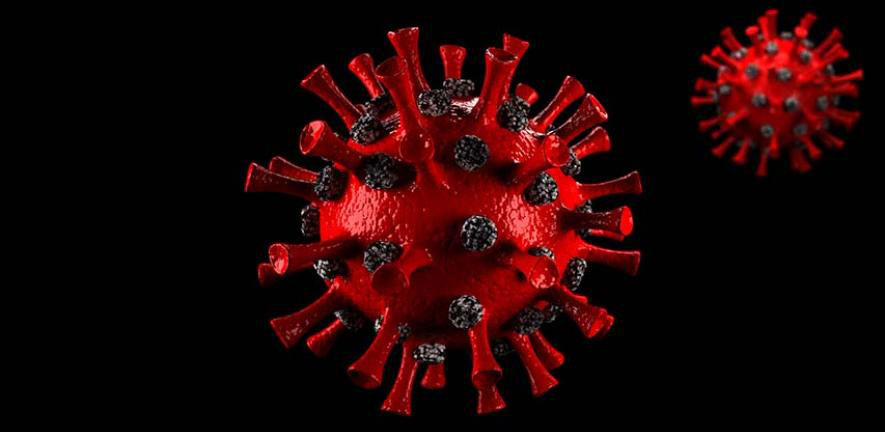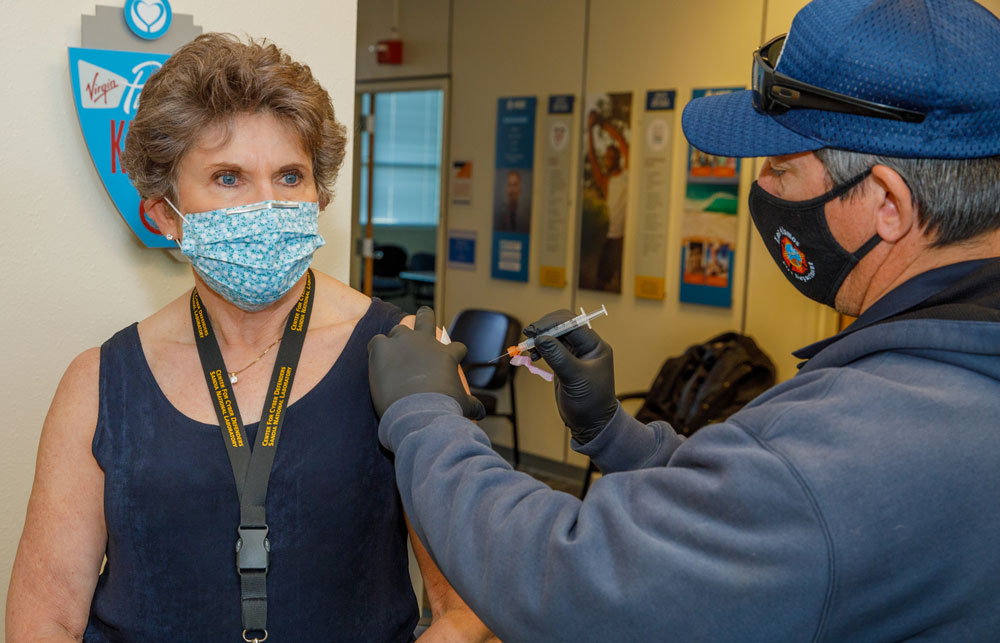
Microsensors to detect SARS-CoV-2 virus
A joint development effort between Honeywell International Inc. and Sandia has produced a microsensor capable of detecting tiny amounts of airborne SARS-CoV-2, the virus that causes COVID-19, under realistic testing conditions. The microsensor combines Honeywell’s optical detection technology with Sandia’s expertise in biological sensing and microfluidics. Future deployments of this technology could detect the virus in hospital wards, building air-handling systems or airplanes to alert of a COVID-19 infection, which would allow proactive measures to limit virus transmission. (8000)
HPC visualization and analysis enhanced
A 24-member team from Sandia and Los Alamos National Laboratory completed the Integrated System and Application Continuous Performance Monitoring and Analysis Capability milestone by analyzing and visualizing high-performance computing application and system data. Because of their work, code teams and system administrators will better understand conditions and issues before, during and after high-performance computing runs. (1000, 9000)
Collaboration improves product realization
The Product Realization Information Management and Exchange, Product Data Management Link and Electronic Data Management teams collaborated to streamline the engineering authorization process by adding new drawing and approval workflow integrations. Nearly three years of collaborative effort between the B61-12, W80-4, Product Realization Information Management and Exchange, Product Data Management Link and Electronic Data Management programs decreased turnaround time for some types of engineering authorizations from six days to about three days. (9000)
New process cuts hazardous waste
Sandia made a positive environmental impact and saved money with a new process for addressing damaged mobile devices and batteries that treats only the batteries as hazardous waste. The devices powered by the batteries are either repaired and returned to the customer or sent to Sandia Reapplication. In addition to reducing Sandia’s hazardous waste, the improved process retains accountability for each battery and reduces the time that Information Technology staff previously spent completing forms. The annual hazardous waste reduction is about 768 pounds with annual projected cost savings of about $300,000. (600, 4000, 9000, 10000)
Sandia enhances video conferencing capabilities
To enable Sandia’s vision of hybrid work, Information Technology teams upgraded 261 Skype meeting rooms, in addition to Microsoft Teams meeting capabilities, and installed 30 new Skype- and Teams-enabled meeting rooms across five locations. They also integrated virtual teleconferencing and Skype infrastructure, allowing users to host and attend meetings from their desktops, thereby increasing the maximum capacity to 250 users and relieving the need to manually record attendees. (8000, 9000)
Information Technology innovates high-performance computing
Sandia’s newest high-performance computing cluster, Manzano, was ranked number 69 on the November 2020 Top500 supercomputers list, a global ranking of the world’s most powerful computers. The cumulation of five months of work by various Sandia Information Technology groups and Procurement, Manzano is achieving processing speeds up to 4.25 petaflops. Manzano establishes Sandia as a visionary of high-performance computing in the NNSA enterprise and creates the groundwork for perpetuating scientific and engineering advancements. Manzano is available for Labswide needs. (9000, 10000)
Cyber community and educational outreach
Sandia cybersecurity teams presented programs on multiple topics to the New Mexico community, including cyber-risks, digital forensics and incident response. Presentations included an eight-day workshop at Central New Mexico Community College, whose primary focus was to involve local students in cyber-security and other STEM fields. The program is part of a broader STEM-related curriculum supported by STEMCore, which prepares underrepresented and underprepared students to achieve foundational skills required for associate and bachelor’s degrees and employment in STEM fields. (3000, 5000, 6000, 9000)
Protecting Sandia against counterfeit items
Counterfeit items pose risk to worker safety and national security. To protect against these risks, Sandia personnel must inspect procured items for nonconformity. Developed by Supply Chain Systems, Supply Chain Risk Management and Supplier Diversity, and User Experience Solutions, the new Labswide solution reduces the time spent recording and reporting inspection results by an estimated 3,000 hours annually. It also demonstrates Sandia’s compliance with federal regulations for reporting nonconforming items. (9000, 10000)

Information Technology supports on-site COVID vaccinations
Responding to fast-developing requirements, Enterprise Information Systems collaborated with Employee Health Services to implement Sandia’s COVID-19 vaccine clinics at the New Mexico campus. This effort included introduction of the COVID-19 Vaccination Scheduling eForm, which enabled employees to provide personal information and schedule two vaccination appointments, offering more convenient and efficient access to vaccinations for employees. The process included checking in with a badge and equipment logistics, such as vaccine storage temperature loggers, for reporting to New Mexico Department of Health. (3000, 9000)